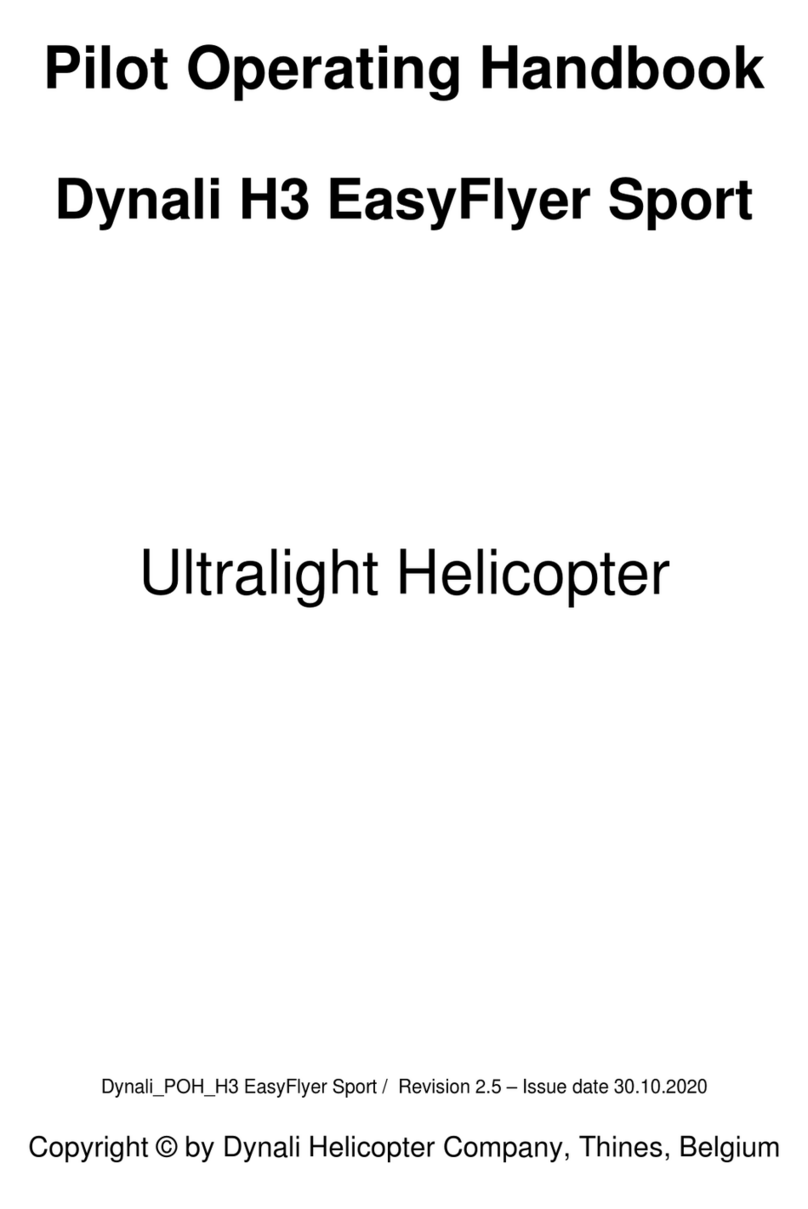CHAPTER 4 – NORMAL PROCEDURES………………………………………………35
4.1. NORMAL OPERATING SPEED…………………………………………………………………………36
4.2. PREFLIGHT INSPECTION AND CHECKS………………………………………………………….....36
4.3. CHECKLISTS : WARNINGS……………………………………………………………………………..37
4.4. ENGINE START…………………………………………………………………………………………...38
4.5. TAKEOFF…………………………………………………………………………………………………..38
4.6. CRUISE…………………………………………………………………………………………………….39
4.7. APPROACH AND LANDING……………………………………………………………………………..39
4.8. AUTOROTATION………………………………………………………………………………………….40
4.9. ENGINE SHUTDOWN PROCEDURE…………………………………………………………………..41
4.10. CHECK OUT……………………………………………………………………………………………...41
CHAPTER 5 – PERFORMANCES…………………………………………………….…42
5.1. GENERAL………………………………………………………………………………………………….43
5.2. CALIBRATION OF AIRSPEED INDICATOR…………………………………………………………...44
5.3. ALTITUDE / DENSITY TABLE…………………………………………………………………………...45
5.4. CEILING FOR HOVER IN GROUND EFFECT………………………………………………………...46
5.5. CEILING FOR HOVER OUTSIDE GROUND EFFECT………………………………………………..47
5.6. DISTANCE / ALTITUDE RATIO USING AUTOROTATION…………………………………………..48
5.7. HEIGHT SPEED DIAGRAM……………………………………………………………………………...49
5.8. NOISE LEVEL……………………………………………………………………………………………..50
CHAPTER 6 – MASS AND BALANCE…………………………………………….……51
6.1. GENERAL……………………………………………………………………………………………...…..52
6.2. MASS AND BALANCE…………………………………………………………………………….……...52
6.3. HELICOPTER LOADSHEET……………………………………………………………………………..58
6.4. LATERAL BALANCING…………………………………………………………………………………..59
CHAPTER 7 – SYSTEMS…………………………………………………………………61
7.1. GENERAL…………………………………………………………………………………….……………62
7.2. CABIN SHELL…………………………………………………………………………………...………...62
7.3. UNDERCARRIAGE………………………………………………………………………………………..62
7.4. MAIN ROTOR……………………………………………………………………………………...………62
7.5. REAR TURBINE OR ANTI-TORQUE ROTOR…………………………………………………….…..62
7.6. TRANSMISSIONS…………………………………………………………………………………………63
7.7. ENGINE…………………………………………………………………………………………………….63
7.8. FLIGHT CONTROLS…………………………………………………………………………...…………63
7.9. ENGINE –CLUTCH –DRIVE BELTS………………………………………………………….……….64
7.10. FUEL CIRCUIT………………………………………………………………………………….………..64
CHAPTER 8 – HANDLING AND MAINTENANCE…………………………..…….…..65
8.1. GENERAL………………………………………………………………………………………………………………..66
8.2. REQUIRED DOCUMENTS…………………………………………………………………..………………….……..66
8.3. MAINTENANCE…………………………………………………………………………………………………………66
8.4. MODIFICATIONS TO THE HELICOPTER……………………………………………………..…………………….67
8.5. MANŒUVRES ON THE GROUND…………………………………………………………………………………...67
8.6. PARKING AND TIEING DOWN…………………………………………………………………..…………………...67
8.7. MAINTENANCE AND PROCEDURES…………………………………………………………..…………………...67
8.8. MAINTENANCE AND SERVICE LIFE…………………………………………………………..……………………67






























